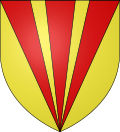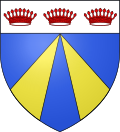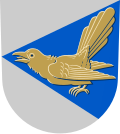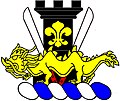
In heraldry, a pile is a charge usually counted as one of the ordinaries (figures bounded by straight lines and occupying a definite portion of the shield). It consists of a wedge emerging from the upper edge of the shield and converging to a point near the base. If it touches the base, it is blazoned throughout.































